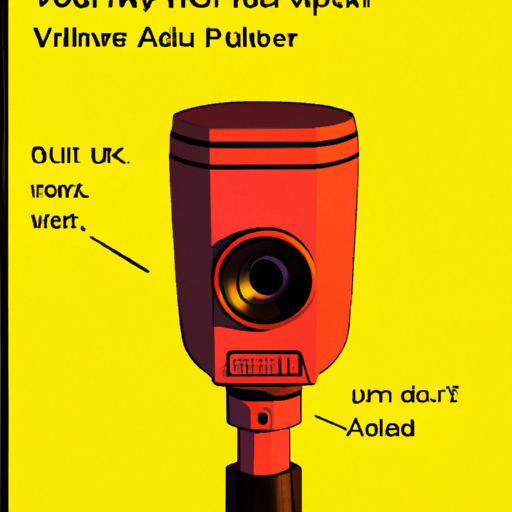
-
Table of Contents
- Voice User Interface (VUI) Design: Revolutionizing User Interaction
- What is Voice User Interface (VUI) Design?
- The Importance of VUI Design
- Best Practices for VUI Design
- 1. Understand the User and Context
- 2. Design a Clear Conversation Flow
- 3. Use Natural Language Processing (NLP)
- 4. Provide Feedback and Confirmation
- 5. Account for Errors and Misunderstandings
- 6. Test and Iterate
- Case Studies: Successful VUI Implementations
- 1. Amazon Alexa
- 2. Google Assistant
- 3. Ford SYNC
- The Impact of VUI Design on User Interaction
- Summary
Voice User Interface (VUI) Design: Revolutionizing User Interaction

In recent years, voice user interface (VUI) design has emerged as a game-changer in the field of user experience (UX) design. With the rise of voice assistants like Amazon Alexa, Google Assistant, and Apple Siri, VUI has become an integral part of our daily lives. This article explores the concept of VUI design, its importance, best practices, and the impact it has on user interaction.
What is Voice User Interface (VUI) Design?
Voice User Interface (VUI) design refers to the process of creating a user interface that allows users to interact with a system or device using voice commands. It involves designing the conversation flow, voice prompts, and responses to ensure a seamless and intuitive user experience.
VUI design is not limited to smart speakers and virtual assistants; it also encompasses voice-enabled applications, websites, and even automobiles. The goal of VUI design is to make interactions with technology more natural, efficient, and user-friendly.
The Importance of VUI Design
VUI design has gained significant importance due to several factors:
- Hands-free and Eyes-free Interaction: VUI allows users to interact with devices and systems without the need for physical input or visual attention. This is particularly useful in situations where users have their hands occupied or when visual interaction is not possible, such as while driving.
- Accessibility: VUI makes technology more accessible to individuals with disabilities or those who have difficulty using traditional input methods like keyboards or touchscreens. It enables a wider range of users to access and benefit from digital services.
- Natural Interaction: Voice is the most natural form of communication for humans. VUI design leverages this natural interaction method, making technology more intuitive and user-friendly. It eliminates the need for users to learn complex interfaces or memorize specific commands.
- Efficiency and Speed: Voice commands can be faster and more efficient than traditional input methods. Users can perform tasks quickly by simply speaking their commands, reducing the time and effort required to navigate through menus or type on a keyboard.
Best Practices for VUI Design
Designing a successful VUI requires careful consideration of various factors. Here are some best practices to create an effective and engaging voice user interface:
1. Understand the User and Context
Before designing a VUI, it is crucial to understand the target users and the context in which they will interact with the system. Consider factors such as user demographics, language preferences, and the environment in which the VUI will be used. This understanding will help in creating a personalized and context-aware experience.
2. Design a Clear Conversation Flow
A well-designed conversation flow is the backbone of a successful VUI. It should be intuitive, easy to follow, and provide clear guidance to users. Use a conversational tone and structure the dialogue in a logical manner. Anticipate user needs and provide prompts or suggestions to guide them through the interaction.
3. Use Natural Language Processing (NLP)
Natural Language Processing (NLP) is a key technology behind VUI design. It enables systems to understand and interpret user commands in a more human-like manner. Incorporate NLP algorithms and techniques to enhance the accuracy and effectiveness of voice recognition and response generation.
4. Provide Feedback and Confirmation
Feedback is essential in VUI design to inform users about the system’s understanding of their commands and actions. Use appropriate voice prompts, tones, and visual cues to acknowledge user input and provide confirmation. This feedback reassures users and builds trust in the system.
5. Account for Errors and Misunderstandings
Errors and misunderstandings are inevitable in voice interactions. Design the VUI to handle errors gracefully by providing helpful error messages and suggestions for correction. Use machine learning algorithms to continuously improve the system’s accuracy and ability to understand user commands.
6. Test and Iterate
Testing is crucial in VUI design to ensure the system’s usability and effectiveness. Conduct user testing sessions to gather feedback and identify areas for improvement. Iterate on the design based on user feedback and continuously refine the VUI to enhance the user experience.
Case Studies: Successful VUI Implementations
Several companies have successfully implemented VUI design to enhance user experiences. Let’s explore a few notable case studies:
1. Amazon Alexa
Amazon Alexa, the voice assistant powering Amazon Echo devices, has revolutionized the way users interact with their homes. With Alexa, users can control smart devices, play music, get weather updates, and even order products from Amazon, all through voice commands. The success of Alexa lies in its natural language understanding, extensive skills ecosystem, and continuous improvement through machine learning.
2. Google Assistant
Google Assistant is another prominent voice assistant that has gained widespread adoption. It is available on various devices, including smartphones, smart speakers, and smart displays. Google Assistant leverages Google’s powerful search capabilities and knowledge graph to provide accurate and contextually relevant responses to user queries. Its integration with other Google services makes it a versatile and powerful voice assistant.
3. Ford SYNC
Ford SYNC is an in-car voice-activated technology that allows drivers to control various functions, such as making calls, playing music, and getting directions, without taking their hands off the steering wheel. By integrating voice commands into the driving experience, Ford SYNC enhances safety and convenience on the road.
The Impact of VUI Design on User Interaction
VUI design has had a profound impact on user interaction, transforming the way we interact with technology. Here are some key impacts:
- Increased Accessibility: VUI design has made technology more accessible to a wider range of users, including those with disabilities or limited mobility.
- Improved Efficiency: Voice commands enable users to perform tasks more quickly and efficiently, reducing the time and effort required for interaction.
- Enhanced User Experience: VUI design provides a more natural and intuitive way of interacting with technology, resulting in a better overall user experience.
- Expanded Use Cases: VUI has opened up new possibilities for voice-enabled applications and devices, ranging from smart homes to healthcare and automotive industries.
Summary
Voice User Interface (VUI) design is revolutionizing user interaction by providing a natural, hands-free, and efficient way of interacting with technology. It has gained importance due to its accessibility, natural interaction, and efficiency. To create effective
